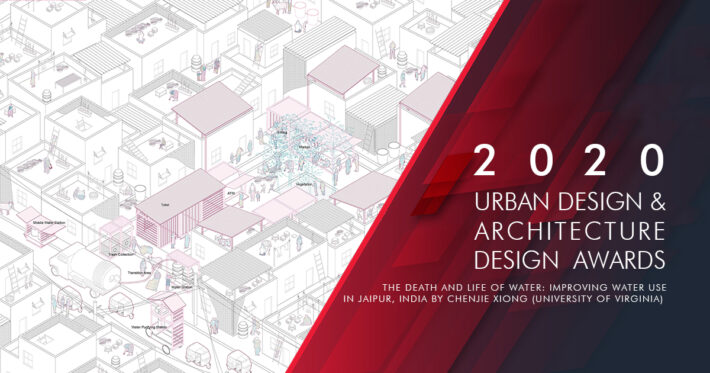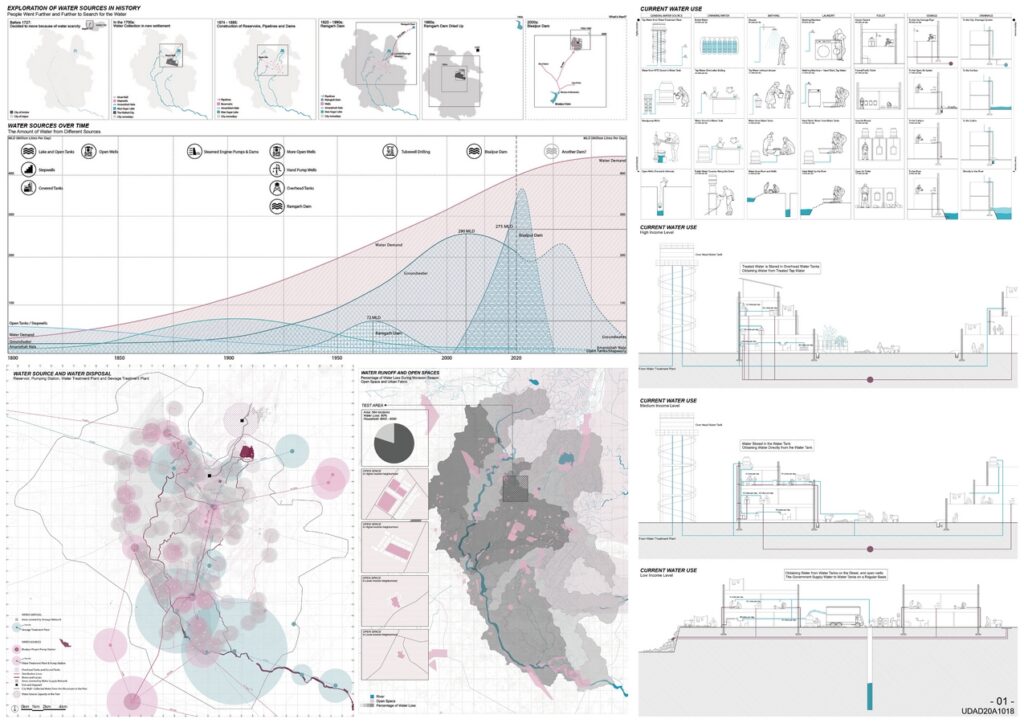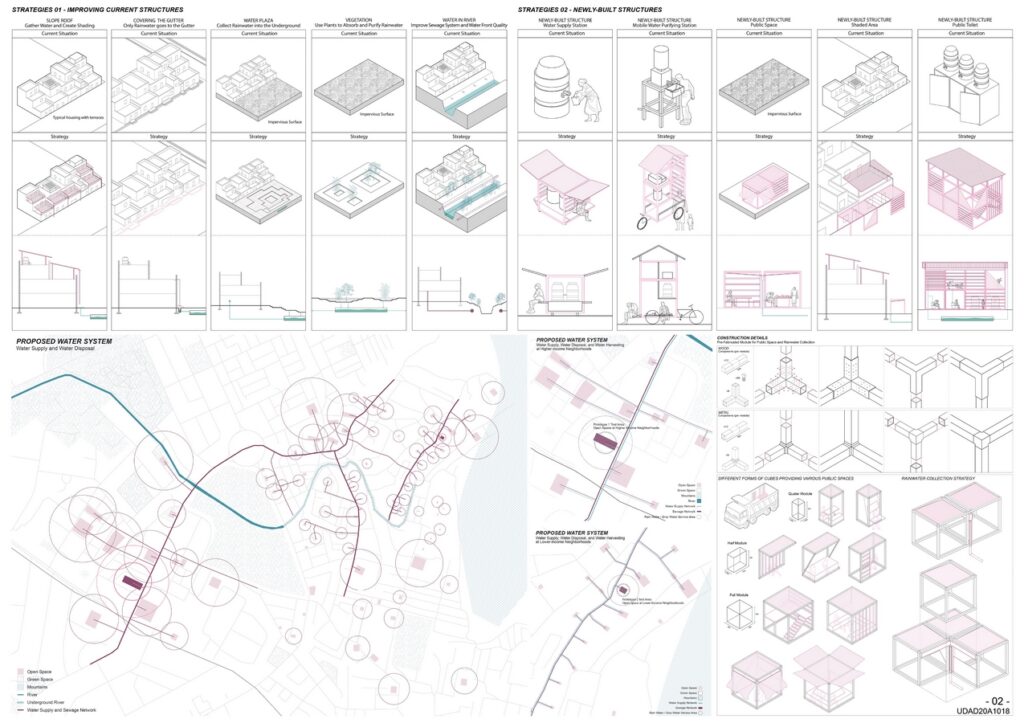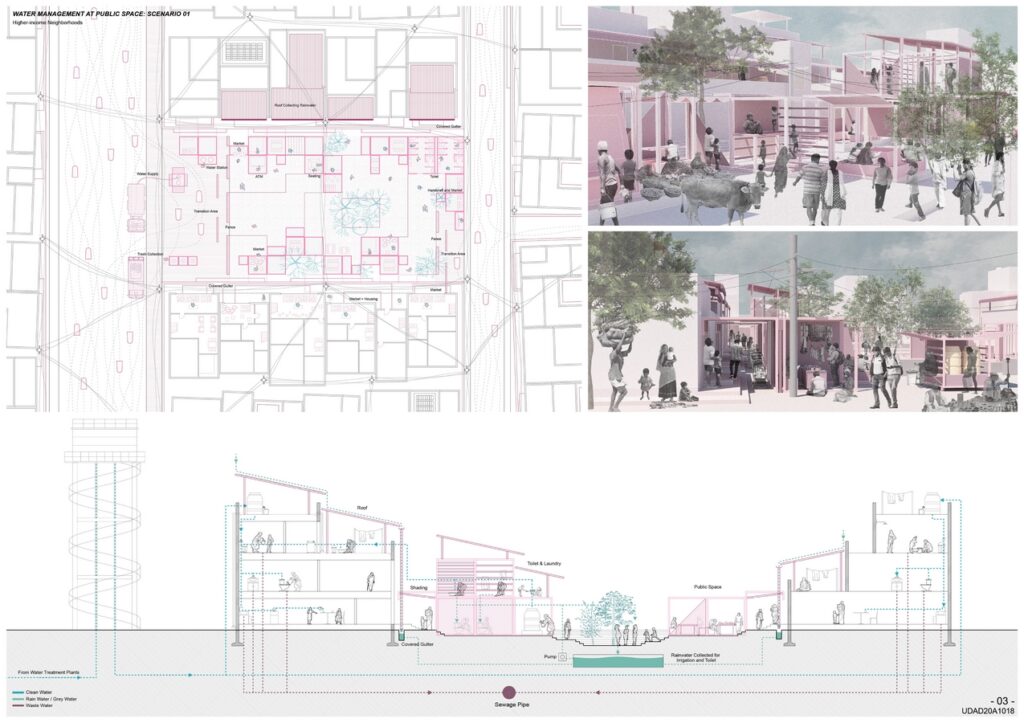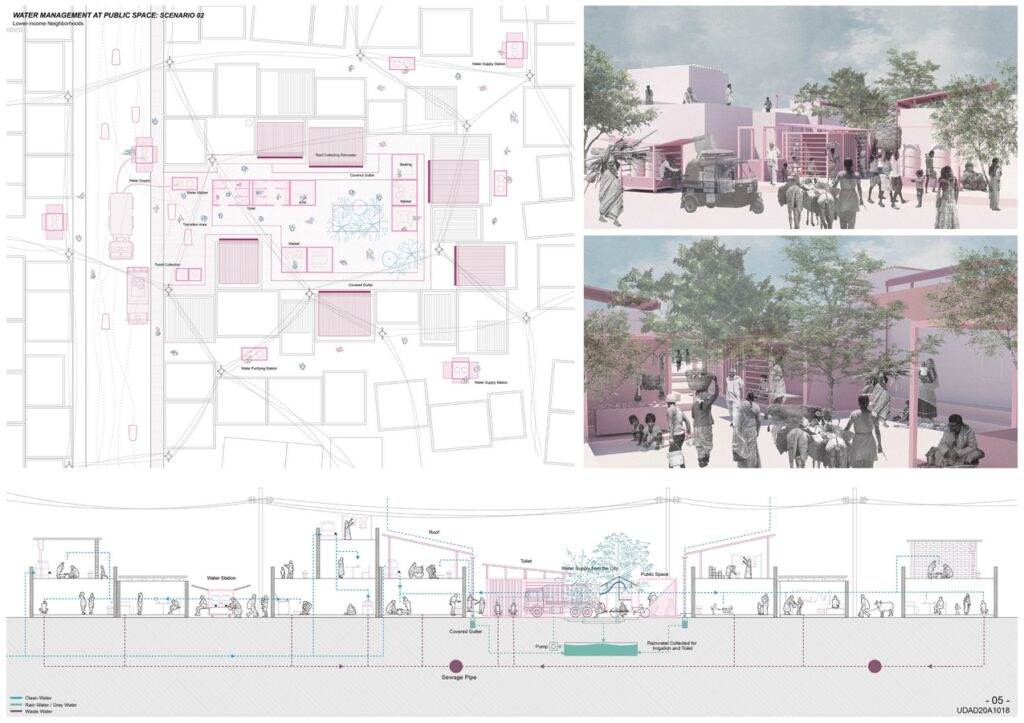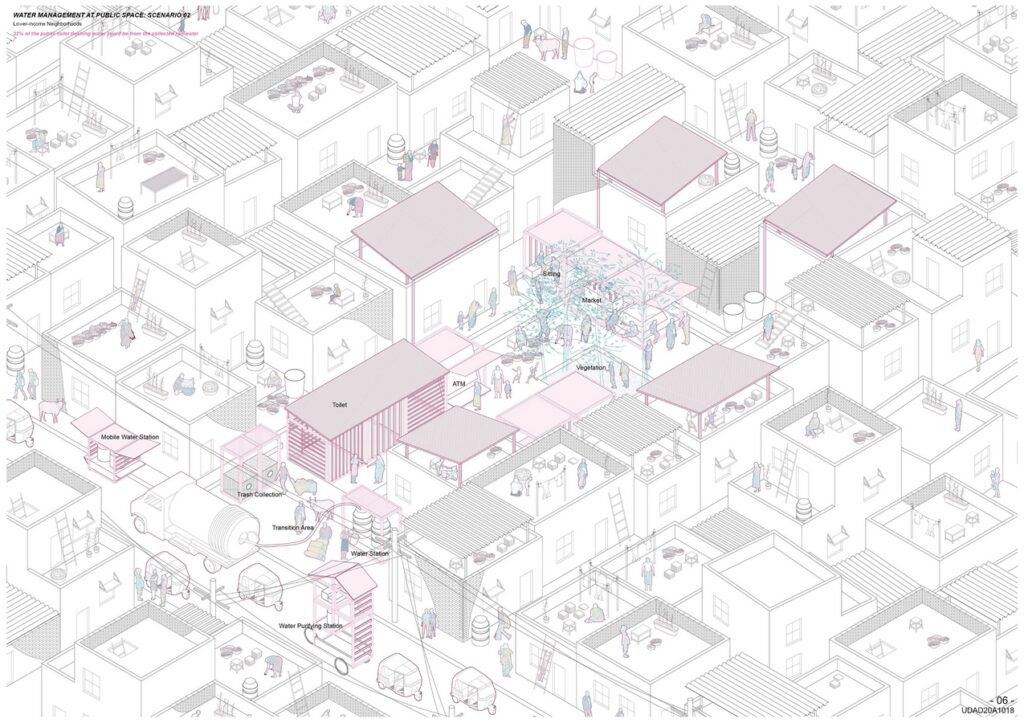The project was dealing with the water issues in Jaipur, India, researching on the possibility of transforming the challenges to opportunities by improving water infrastructures and management at housing and public space.
Honorable Mention
Urban Design & Architecture Design Awards 2020
The Death and Life of Water: Improving Water Use in Jaipur, India
Urban Design Concept
Firm/University
University of Virginia
Architect/Designer
Chenjie Xiong
Design Team
Chenjie Xiong
Location
Jaipur, India
Country
United States
Photographer/Copyright
©Chenjie Xiong
Throughout history, people in the city of Jaipur have always been struggling with water scarcity. People went further and further to get water because the city’s expansion and population growth continuously outgrew the local supply. Presently, the city has to obtain water primarily from the Bisalpur Dam 150km away. However, there are 20% of total water demands which still cannot be met, and it is projected that the city will lose its current water source in 20 years. In addition, the city is confronting flood issues as well; people suffer from water scarcity during dry seasons, and inundation during monsoon seasons.
The test area has around 9000 households and around 80% water loss during monsoon seasons because of impervious surfaces. Only 52% of households have access to treated water, and only 17% are connected to the closed drainage system.
Therefore, the project envisions an alternative way to manage water considering basic water infrastructure related to water lifecycle and harvesting strategies. These water systems are integrated and combined with building structures at public spaces in the community, providing better quality of public spaces while educating the public and giving visibility to the water collection process.
At the first step, a system of water supply and disposal network was proposed in order to connect households to the whole city’s water system, while collected rainwater is stored locally in the neighborhoods and only serves nearby public toilets as gray water.
Then, various water strategies are proposed, and these strategies could become a set of toolkits and guidelines that could be applied to multiple places. Prefabricated, light structures are inexpensive and easy to be installed in open spaces, and are flexible in response to various types of public space needs. Potential programs of public spaces include shaded area, markets, handicrafts, water supply stations and public toilets, integrating daily activities with water use and sanitation management.
After that, two neighborhoods are selected and developed with specific strategies, focusing on different strategies: basic water infrastructure is of more importance in lower-income neighborhood, whereas the combination of public spaces and water management is needed in higher-income neighborhoods.
Through the implementation, in a higher-income neighborhood with 100 households, 56% of the public toilet flushing water could be from the collected rainwater; in a lower-income neighborhood with 80 households, 22% of the public toilet flushing water could be from the collected rainwater.
Registrations open… Don’t miss the opportunity to win with your visionary projects.


